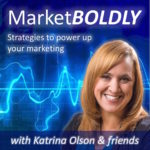

Join me with guest Michael Evanko, VP of Reading, Pennsylvania-based Fromm Electric Supply in this second installment of this discussion about the digital transformation in electrical distribution. If you’re still figuring out how to get started, tune in to learn:
- What to think about when adopting a new technology like CRM
- Why marketing must take a strategic leadership role in the digital transformation
- What to consider when deciding between outsourcing or adding marketing staff
- How (or if) one person can manage a distributor’s entire marketing function
- Why you can never stop learning
Michael discusses his experience and offers suggestions for those just beginning their digital journey. It’s not as difficult as you think if you have the right approach and the right people on your team.



 Fonts literally come in all shapes and sizes; some have thick lines; some have thin lines. Some are narrower, taking up less space; others are wider, taking up more space. Some are older; some are more contemporary. Some are taller and some are shorter.
Fonts literally come in all shapes and sizes; some have thick lines; some have thin lines. Some are narrower, taking up less space; others are wider, taking up more space. Some are older; some are more contemporary. Some are taller and some are shorter. Last week we talked about using color in advertising. But that’s just one of the “big three” tools in the graphic designer’s toolbox. Another is visuals.
Last week we talked about using color in advertising. But that’s just one of the “big three” tools in the graphic designer’s toolbox. Another is visuals.












